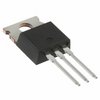-
The maximum safe operating area (SOA) for the IRFZ44RPBF is not explicitly stated in the datasheet, but it can be estimated based on the device's thermal resistance and maximum junction temperature. As a general rule, it's recommended to keep the device within the SOA boundaries to ensure reliable operation.
-
To calculate the thermal resistance of the IRFZ44RPBF in a specific application, you need to consider the device's junction-to-case thermal resistance (RθJC), case-to-ambient thermal resistance (RθCA), and the thermal interface material's thermal resistance (RθTI). You can use the following equation: RθJA = RθJC + RθCA + RθTI. Consult the datasheet and application notes for more information.
-
The recommended gate drive voltage for the IRFZ44RPBF is typically between 10V to 15V, depending on the specific application and switching frequency. However, it's essential to ensure that the gate drive voltage is within the recommended range to avoid damaging the device.
-
Yes, the IRFZ44RPBF can be used in high-frequency switching applications, but it's essential to consider the device's switching characteristics, such as the rise and fall times, and ensure that the device is operated within its recommended specifications. Additionally, proper PCB layout, decoupling, and thermal management are crucial to ensure reliable operation.
-
To ensure the IRFZ44RPBF is properly cooled, consider the following: use a heat sink with a thermal interface material, ensure good airflow, and keep the device away from other heat sources. You can also use thermal simulation tools to estimate the device's temperature and optimize the cooling system.
 IRFZ44RPBF datasheet
by Vishay Siliconix
IRFZ44RPBF datasheet
by Vishay Siliconix
 IRFZ44RPBF datasheet
by Vishay Siliconix
IRFZ44RPBF datasheet
by Vishay Siliconix